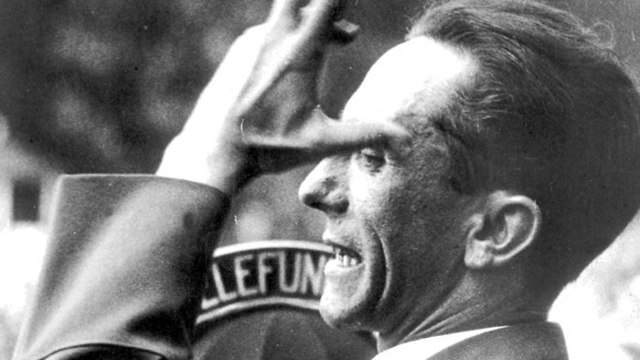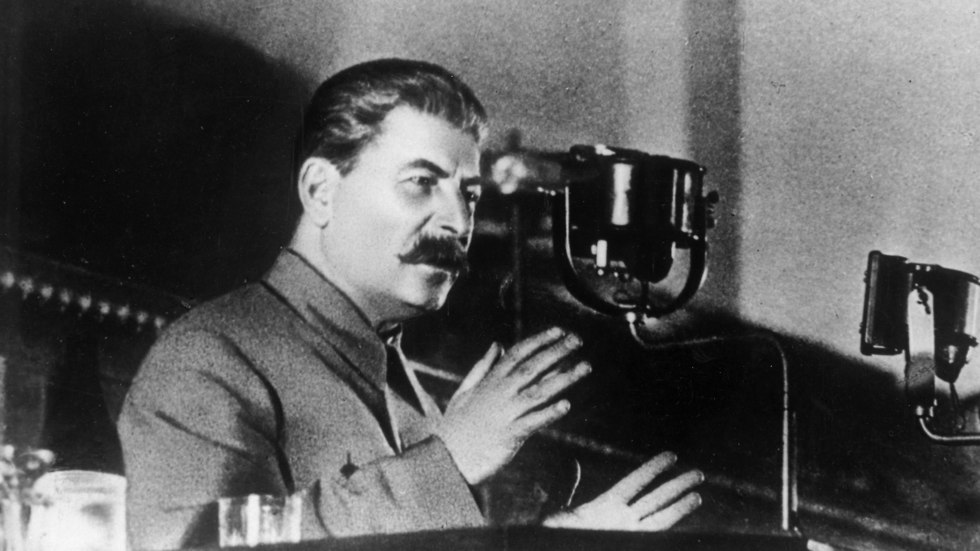Fake news is now threatening world politics, and everyone is blaming everyone else for it. Donald Trump, obviously, is one of the main culprits. The Washington Post, for instance, has found that since Trump took office, he’s managed to make 6,000 deceptive or false statements. In a speech from May 2018, Trump made 98 statements, of which 76% were false, deceptive or not backed by evidence. And yet Trump and his supporters repeatedly refer to news outlets like the Washington Post, the New York Times and CNN as the “lying press,” accusing them for conspiring against the president. In Israel, Benjamin “the Arabs voting in droves” Netanyahu assumes Trump’s role. Recent police investigations raise serious suspicions that Netanyahu didn’t only allegedly spread biased reports, but had also tried to influence major media outlets in Israel. Netanyahu and many of his supporters claim that these suspicions are without base, and are a part of a fake news campaign that is aimed at slandering an excellent, innocent prime minister. In tyrannical regimes, like in China and Russia, the media is wholly subordinate to the government, which is free to rain whatever false facts it pleases upon its people. Moreover, these regimes have been blamed for spreading fake news worldwide, in order to support their politicians of choice, and hamper people’s belief in the very possibility of having a free media and a democratic regime.

US President Donald Trump (Photo: EPA)
From Vladimir Putin’s point of view, if Americans lose faith in democracy, Russians are less likely to want a democracy for themselves. However, the hysteria over the fake news phenomena is slightly overdone, and could very well play into the hands of tyrants. It’s hard to have an open public discussion when people no longer believe anything at all, since “it’s all fake news”. We have to remember that nowadays, in the 21st century, the way we view the truth isn’t in worse shape than it was in previous periods. Human societies have managed to function under massive attacks of fake news, and far worse lies than the ones we are now experiencing. We need to remember that fake news is old news. Propaganda, political lies and fabrications have been with us for thousands of years. For most of history, a major part of the “news” and “facts” that people came to know through their (non-virtual) social networks, were fables about miracles, witches, angels and demons. Long before Facebook and Twitter existed, the masses were easy to pump full of unfounded rumors. If you lived in a small medieval town, a neighbor might approach you and whisper: “you know that old cat lady who lives in a shack by the woods? I saw her riding her broomstick across the skies last night!” By evening, the frightful witch would be burning at the stake. A month later, that same babbling neighbor might spread a new rumour: “Remember the miller’s son who went missing? Last night I went past the synagogue, and what do I hear coming from the basement? A screaming child! The Jews must have murdered him for their Passover matzos!”. Two hours later, a bloodthirsty mob would be brandishing pitchforks and torches in the town square, ready and willing to kill every Jew in town. Not only individual fables, but also whole religions and ideologies were crafted by using human imagination. Even religious people will agree that all faiths, save one, are based on fake news. What’s the odd one out? Why their religion, of course. Ask a Jew and he’ll tell you that claiming that Jesus was the son of God is a complete fable. Ask a Christian, and he’ll resent that, but say that there’s no way that Angel Gabriel revealed the Quran to Mohammed. Ask a Muslim, and he’ll swear that the story of Gabriel is true, but that all the gods, goddesses and myths of the Hindus are complete nonsense. During the 20th century, masters of propaganda like Adolf Hitler and Joseph Goebbels made lying into an art form. Goebbels’ technique was based on one assumption: “A lie told once remains a lie but a lie told a thousand times becomes the truth.” Hitler described the art of lying in one of the more sophisticated parts of his book Mein Kampf, and explained that people believe big lies easily in comparison to small ones, since “they themselves lie in little things, but would be ashamed of lies that were too big. Such a falsehood will never enter their heads and they will not be able to believe in the possibility of such monstrous effrontery and infamous misrepresentation in others...”
In other words: if you lie, go big.

Joseph Goebbels, German Nazi politician and Reich Minister of Propaganda of Nazi Germany from 1933 to 1945 (Photo: AP)
Perhaps the best example for how true Hitler’s assumption was, lies in the career of his sworn enemy Joseph Stalin. The Soviet tyrant was one of history’s biggest murderers, and his victims probably number more than those of Hitler. Yet, in his lifetime he managed to persuade whole nations—including intellectuals, journalists and leading scientists—that he was humanity’s saviour. Nowadays, Vladimir Putin is having trouble hiding his responsibility for thousands of deaths in Ukraine whereas Stalin deceived a large part of the world regarding the death of millions. When Stalin died in May 1953, Israel’s United Workers Party (then the second largest party in the Knesset, that later morphed into a part of Meretz) published a long obituary, saying that “the United Workers Party of Israel was horrified to hear of the grave disaster that befell the Soviet Union, world proletariat and and all of advanced mankind, with the great leader and military man Joseph Vissarionovich Stalin being taken away from us.” The obituary called him “captain of the world’s peace movement,” and said that “we hope that his historic work will lead generations to come.” It’s true that the internet has made spreading lies easier than it was in Stalin’s days—but it also made spreading truth much easier. During the tyrants' days, Israeli kibbutzniks and European journalists knew little of the thousands dying of starvation in Ukraine, Stalinist population cleansings or Siberian gulags. Today, in the age of smartphones and YouTube, it’s a lot harder to conceal atrocities of such scale. It’s important to say that democratic governments have also used propaganda and lies throughout history. During the Cold War, the US was locked in a global propaganda campaign against the Soviets, not only to refute their lies—but also to destable socialist regimes around the world, and hide atrocities by America and her allies in Vietnam, Indonesia, Bangladesh, Chile and many other countries. When propaganda wasn’t enough, Americans were prepared to take more direct measures, like assassinations and military coups, to overthrow regimes that they didn’t like. In comparison to the American interference in Iranian politics in 1953, Indonesian politics in 1965, or Chilean politics in 1973, the Russians attempt to sway the 2016 US election are mere child’s play. Israel was never out of the game either. In the famous 1954 Lavon affair, Israeli agents executed terror attacks in Egyptian cinemas and libraries. The point was making it look like the bombings were the work of Egyptian nationalists, and destablize the Egyptian rule and the country’s relationship with other Arab countries. Two years later, in 1956, Israel signed a secret deal with France and Britain, designed to set the stage for the two nations to take over the Suez Canal. Under the agreement, Israel would attack Egypt, and then France and Britain would intervene as “neutral forces” and demand the two foes back away from the canal. Israel was supposed to agree and Egypt, it was believed, would refuse—allowing the European nations to take over Suez. Most Israeli citizens knew nothing of this secret agreement, and of the real reasons behind the Suez Crisis. But how different really are these events to the curtain of lies spread by Putin during the invasion of Ukraine and the takeover of Crimea?
What still makes the current trend of fake news different, however, is the ability to tailor propaganda on an individual basis, and match lies to all prejudices. When Hitler gave a radio speech to the entire German nation, he had to aim for the lowest common denominator. Howerer, modern trolls and hackers can tell different stories to different people. They can use big-data algorithms to get to know a person's weaknesses—and then use them against him.
Trolls can’t create hate or fear where it doesn’t exist. But once they discover the hatreds and weaknesses within us, it’s very easy to press the right emotional buttons and fan the flames. For instance, if you’re afraid of immigrants, trolls will show you a fictitious story about immigrants who raped local women, and since you tend to believe these kind of stories, you won’t bother checking the story’s authenticity. Meanwhile, your neighbor, who thinks that all those who oppose immigration are dumb fascists, will be handed a false story about racist groups who murder immigrants, and she’ll buy it easily. Now, try having a rational conversation with your neighbor about immigration. Trolls may not even care about immigration themselves. They’re just using the subject as a device to split and tear society, and crash the democratic system from within. Divide and rule—that’s their motto. So what can we do in order to protect our democracy and our public discourse? First of all, we have to acknowledge our weaknesses, fears and hatreds, and not to allow them to become weapons in the hands of trolls. If we know that we’re prejudiced about a particular group or sect—be it Arabs, the ultra-Orthodox, gays or settlers—and we stumble upon a story about this group, we should be extra careful, check its authenticity and its source. And that’s hard, because when we’re furious, we lose our equilibrium. But it’s important to make that effort. Another way to defend ourselves is to look at the big picture. Despite Hitler’s claims about big lies, it’s still easier to fabricate or twist a single fact rather than an entire historical process. If, for example, we’re absorbed in current news, we might think that we live in the most violent period in history, or that terror is a major threat to Western civilization. In fact, today’s Western world is the most peaceful place in history, where many more people die in car crashes or of pollution than in terror attacks.

Joseph Stalin, ruller of the Soviet Union from the mid–1920s until his death in 1953 (Photo: Getty Images)
Since the events of 9/11, terrorists have managed to kill a total of 50 people per year in the European Union, 10 in the US, and 25,000 worldwide (mostly in Muslim countries and the Middle East). Car crashes, on the other hand, claim 80,000 European lives each year, and some 1.25 million lives worldwide. Pollution kills seven million people per year. In order to defend ourselves from hysteria and manipulation, we should read less tweets and more books. The problem is that people don’t have much time for books, and because of the way evolution shaped human psychology, articles about terrorism are more attractive than articles about climate change. Newspapers sell better with a headline screaming “terror attack!” than one saying “new research about greenhouse gasses.” It’s the responsibility of journalists and editors to resist temptation and use all their creativity in order to write interesting stories about climate change. It takes a mediocre journalist to write an interesting story about terror—but a genius journalist to write one about climate change. But if we don’t support journalists in their fight for human attention, they’ll never win. We have to help them; the public has to change its attitude towards news. Right now, the model is “sensational news in exchange for our attention.” Consumers don’t pay for news, and they get a poor product in return. Worse than that: they become the product themselves. Our attention is caught with sensational headlines, and then sold off to politicians and PR and marketing companies. Think of that next time you’re offered a free newspaper. As the battle for our attention worsens, the truth gets cornered, since it has no advantage in this fight. The easiest way to capture human attention is by pressing the right buttons—the fear button, the hate button, the greed button. Too many media outlets specialize in pressing those buttons rather than searching for the truth. That’s why the model has to change. A far better one would be, “high quality news that cost a lot of money—but doesn’t take advantage of our attention.” Information and attention are valuable resources, and it’s incredibly daft to give our attention for free, and get low quality information in return. If we’re willing to pay good money for quality clothes, food and cars—why aren’t we willing to pay for good quality news?
Let's block ads! (Why?)
The truth about fake news : http://bit.ly/2ESS3JX




No comments:
Post a Comment